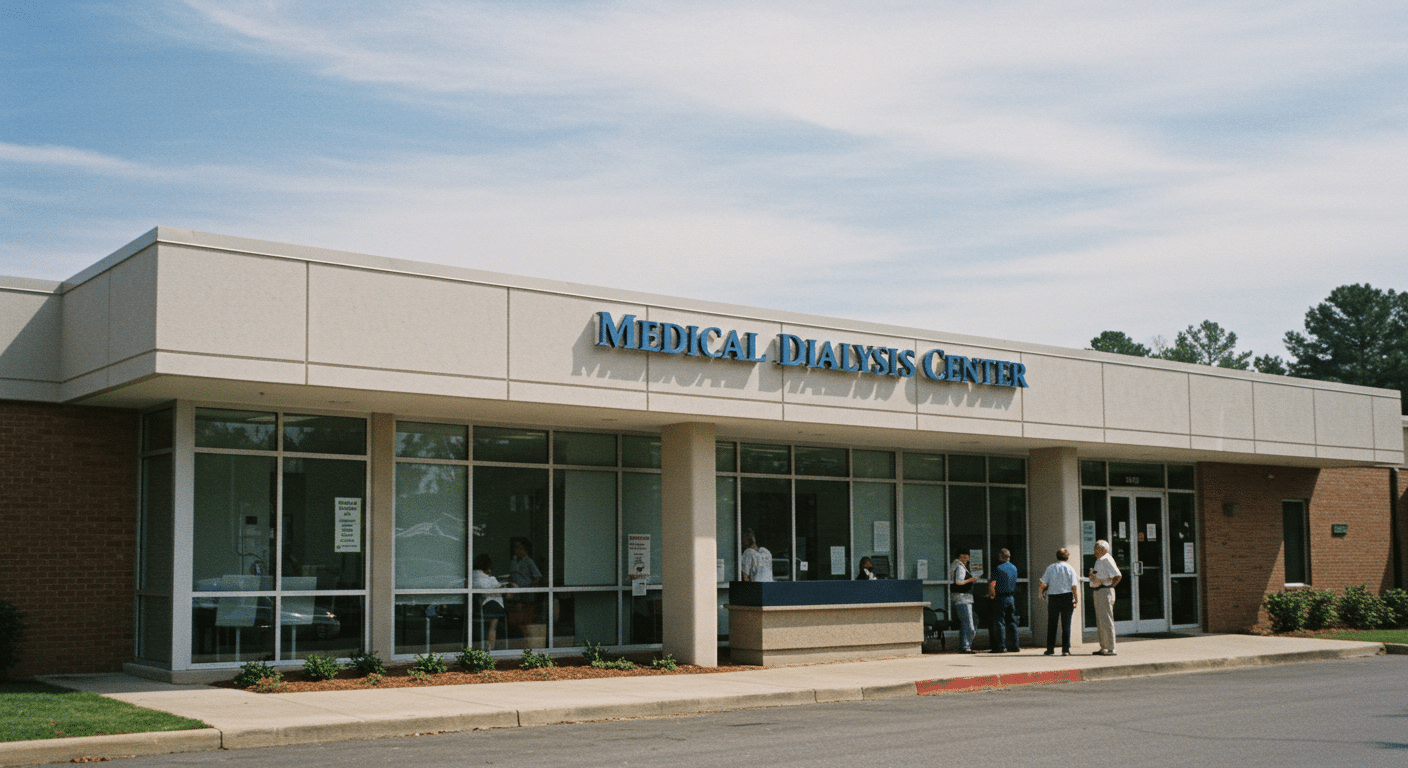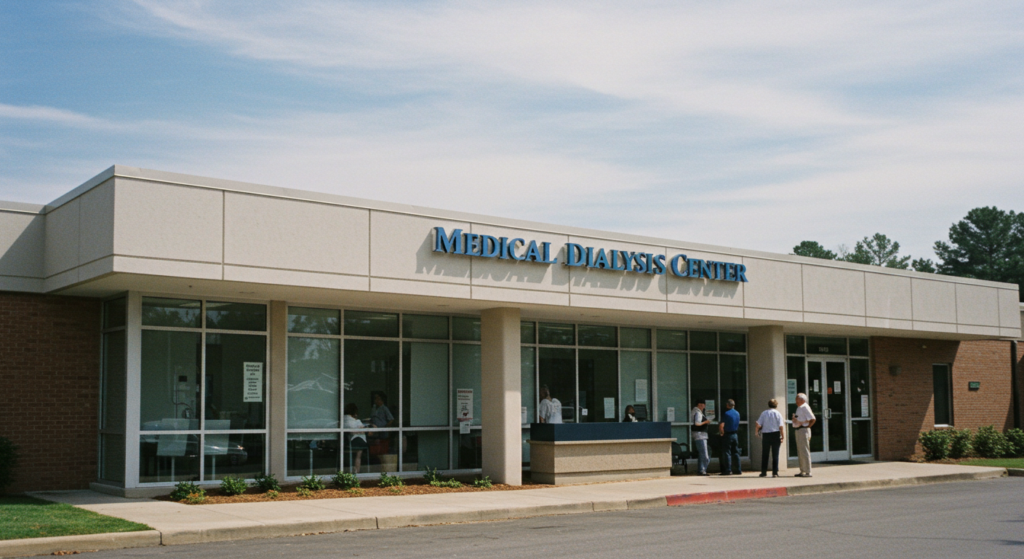
Narrative
In 2021, the owners of a medical dialysis center in Lawrenceville, Georgia, undertook strategic tax planning to enhance their investment. The property consists of a single one-story building designed to provide specialized medical services to the community. Originally constructed in 2019, the dialysis center features state-of-the-art medical equipment and facilities designed to serve patients requiring regular dialysis treatment.
The building's exterior showcases durable EPDM roofing and aluminum windows, built on a concrete slab foundation. The interior is well-appointed with specialized medical features including dialysis treatment chairs, medical equipment counters, dedicated medical equipment outlets, and observation windows. The facility also includes laminate wood flooring throughout patient areas, vinyl baseboard, and FRP (Fiberglass Reinforced Plastic) panels for easy maintenance and sanitation. Supporting infrastructure includes a 150kW generator for emergency power, an 800A electrical service, and comprehensive fire sprinkler system.
The owners engaged Engineered Tax Services (ETS) to perform a comprehensive cost segregation study of the property. With a total depreciable basis of $3,254,483 and land value of $711,732, this study aimed to identify and reclassify specific assets, enabling the acceleration of depreciation and optimizing tax benefits. This case study outlines the cost segregation strategy employed and its significant impact on the financial outlook of the property.
Objective
The primary objective of the cost segregation study was to identify and classify the dialysis center's assets to optimize the owners' tax savings. By breaking down and reallocating components into shorter depreciation life categories, ETS aimed to provide both immediate and long-term financial benefits through accelerated depreciation.
Methodology
ETS employed a detailed, engineering-based approach, which included:
- Physical Inspection: conducting a thorough site visit to identify and photograph the property's components
- Document Review: examining architectural plans, construction documents and accounting records
- Cost Analysis: applying engineering principles to allocate costs to specific asset classifications
- Depreciation Calculation: calculating depreciation using IRS-accepted methods such as the Modified Accelerated Cost Recovery System (MACRS)
Learn More About Cost Segregation
Explore the benefits of cost segregation and how it can enhance your property's profitability. Dive deeper into our strategies.
Discover MoreAsset Allocation
5-Year Class Life
Total Depreciation Allocation: $923,062.30
Percentage of Total Depreciable Basis: 28.36%
5-year class life assets identified in this study include:
- Television connections and computer connections
- Dialysis treatment chairs
- Medical equipment counter sinks
- Base cabinets and wall cabinets
- Kitchen equipment prep sinks and break room sinks
- Laminate wood flooring and countertops
- Window shades
- Dedicated medical equipment outlets and GFI outlets
- Equipment panels (225A and 100A)
- Dialysis station PVC piping for water and waste
- Floor scales
- Plastic utility sinks
- FRP wall panels
15-Year Class Life
Total Depreciation Allocation: $613,487.08
Percentage of Total Depreciable Basis: 18.85%
15-year class life assets identified in this study include:
- Monument sign and dumpster gate
- Bollards and brick screen wall
- Concrete dumpster pad
- Site light poles (1-arm)
- Landscaping
- Storm catch basins and 12″ metal storm lines
- Concrete curbs and sidewalks
- Asphalt paving
- Parking space striping
39-Year Class Life
Total Depreciation Allocation: $1,717,933.62
Percentage of Total Depreciable Basis: 52.79%
39-year class life assets identified in this study include:
- Building footing (14.8 KLF)
- EPDM roof and metal roof deck
- HVAC rooftop units (3 ton and 7.5 ton)
- Aluminum windows
- Building slab on grade (4″)
- CMU walls and brick veneer
- Drywall partitions
- Fire sprinkler system
- Water heaters (30 gallon)
- Restroom fixtures and vanity sinks
- General electrical panels and incoming 800A electrical service
- Exit signs and emergency lighting
- Recessed fluorescent lighting
Class Life Details:
Summary
The cost segregation study for this medical dialysis center in Lawrenceville, Georgia, demonstrates the substantial financial advantages of strategic tax planning. By reclassifying property components into shorter depreciation categories, the study enabled accelerated depreciation on 47.21% of the depreciable basis ($1,536,549.38 moved to 5 and 15-year property), resulting in maximized tax savings and improved cash flow. Through 2024, the total increase of depreciation was $1,692,558.31 compared to standard 39-year depreciation. This approach not only enhanced the dialysis center's profitability but also allowed for more efficient capital management and future facility upgrades. The case study illustrates how cost segregation can significantly boost the financial performance of medical real estate investments.
Unlock Your Tax Savings
Discover how cost segregation can maximize your tax benefits and improve cash flow. Get started today with a free consultation.
Get Your Free Consultation
